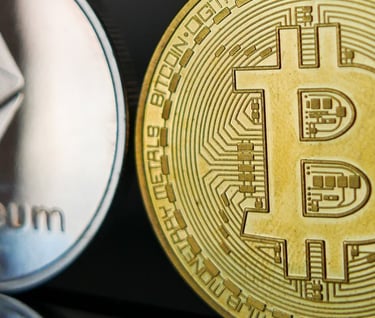Fast DeFi Breakdown: How Decentralized Finance is Transforming the Financial Landscape
Decentralized Finance (DeFi) has taken the world by storm, promising a revolutionary shift in the way we interact with financial services. Built on the foundations of blockchain technology, DeFi has emerged as a powerful alternative to traditional finance, offering greater accessibility, transparency, and control over financial transactions.


In this post, we'll explore the core concepts of DeFi, examine its key components, and discuss the ways in which it's transforming the financial landscape.
What is Decentralized Finance (DeFi)?
Decentralized Finance, or DeFi, is a rapidly growing ecosystem of financial applications and protocols built on blockchain platforms, most notably Ethereum. These applications leverage smart contracts to eliminate intermediaries such as banks and financial institutions, allowing for permissionless, transparent, and secure transactions. DeFi aims to democratize finance by providing access to financial services for everyone, regardless of their geographic location, social status, or credit history
Key Components of DeFi
DeFi is composed of a diverse range of applications, each offering unique financial services. Some of the most prominent components include:
Decentralized Exchanges (DEXs): DEXs facilitate peer-to-peer trading of cryptocurrencies without the need for a central authority. This allows users to maintain control over their funds and avoid the risks associated with centralized exchanges, such as hacking or regulatory issues.
Lending and Borrowing Platforms: DeFi lending platforms connect borrowers and lenders directly, enabling users to earn interest on their assets or take out loans without the need for a traditional financial institution. These platforms often use overcollateralization and algorithmic interest rate adjustments to manage risk.
Stablecoins: Stablecoins are cryptocurrencies designed to maintain a stable value, often pegged to a fiat currency like the US dollar. They play a crucial role in DeFi, providing a less volatile asset for transactions and serving as collateral for loans.
Liquidity Pools and Automated Market Makers (AMMs): Liquidity pools are pools of tokens used to facilitate trading on decentralized exchanges. AMMs use algorithms to automatically adjust token prices based on supply and demand, reducing slippage and providing a more efficient trading experience.
Yield Farming: Yield farming is a strategy employed by DeFi users to maximize their returns by leveraging multiple platforms and protocols. Users often provide liquidity or stake their assets in exchange for governance tokens, which can be used for voting rights or sold for profit.
The Impact of DeFi on the Financial Landscape
DeFi has the potential to significantly disrupt and reshape the financial industry in several ways:
Financial Inclusion: By removing barriers to entry and providing access to financial services for unbanked and underbanked populations, DeFi can empower millions of people around the world and contribute to economic growth.
Cost Reduction: DeFi platforms eliminate intermediaries and their associated fees, resulting in more cost-effective financial services for both individuals and businesses.
Transparency and Security: DeFi's open-source nature and reliance on blockchain technology ensure transparency, immutability, and security, reducing the risk of fraud and corruption.
Increased Competition: The emergence of DeFi can drive innovation and force traditional financial institutions to adapt, potentially leading to improved services and reduced fees for consumers.
